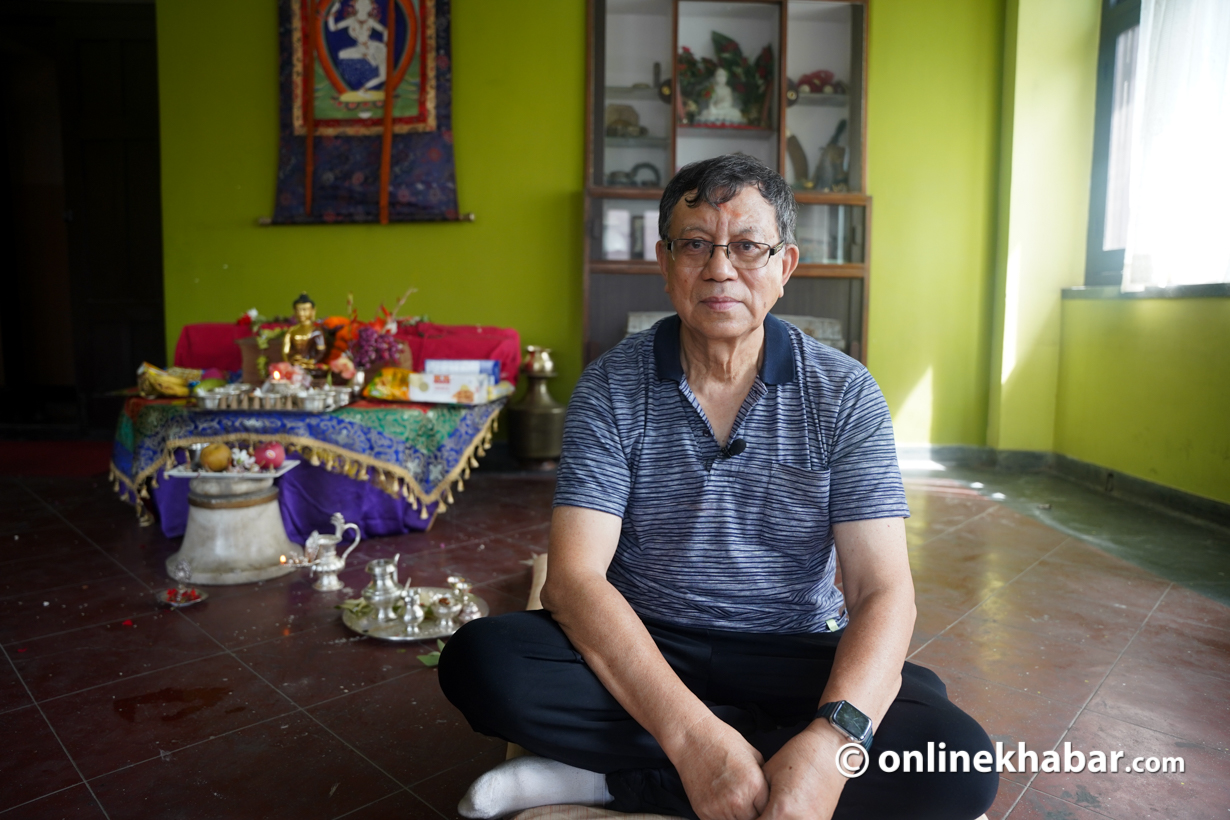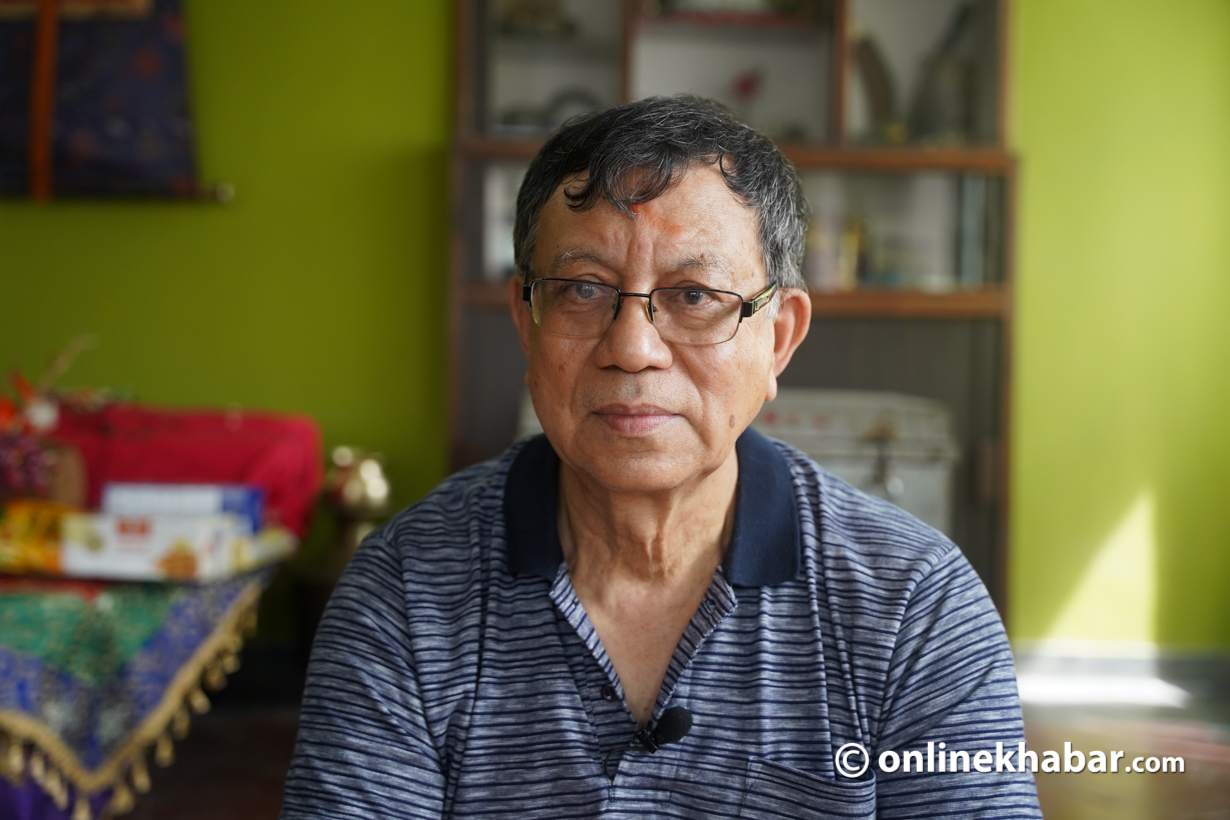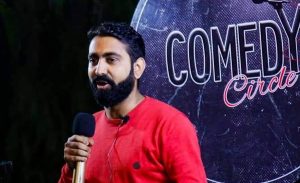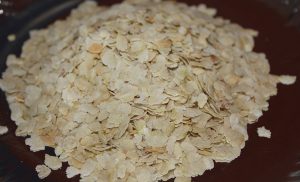
Every morning in the Hirna Varna Mahabihar in Patan, some 20 priests recite the chants of pragyaparamita in almost unison tone. For the span of this month, locally celebrated as gunlaa by the Newa community of the Kathmandu valley, the bihar takes turns reciting the 100,000 verses of the pragyaparamita in the name of the different people.
On the other hand, approximately five kilometres from the Hirna Varna Mahabihar, Swayambhu Man Tamrakar, 75 of Mahabouddha is still in search of people willing to recite the pragyaparamita that has been entrusted to him this year.
On the first day of the Gunlaa this year (August 17), Tamrakar carefully took out the five-part series from its box, each wrapped in a red cloth. In the presence of a priest, he conducted a ritual and opened the pragyaparamita. Over the course of this year, he aims to complete the reading of at least one part of the five-part series which has been with his family for 200 years.
The Tamrakar family had aspirations to begin recitations of the texts in the script on Gunlaa. However, due to the scarcity of individuals experienced in reading the pragyaparamita, they found themselves in a state of waiting. What could have been accomplished in a day will now span an entire year, as the number of people capable of reading it continues to diminish with each passing year.
The guthi at Piganani, Maru that owns ashtasahashrika pragyaparimita also are facing the same crisis.
Importance of pragyaparamita

Within Buddhism and its holy scriptures, the pragyaparamita holds significant importance and is revered as a foundational text. There are six variations of this scripture. The most renowned is the shatasaahasrika pragyaparamita, also known as laskyaawati, consisting of [at least] 100,000 verses (shlok). Other versions of the pragyaparamita range from 25,000 to 125,000 verses.
Regardless of the variation, and the number of verses it boasts, the main motive of the scripture is to guide the people during meditation and help them reach the state of zero (absolute peace). Pragya refers to all the qualities that people should adopt like practising good thoughts and deeds, gaining knowledge, practising meditation and attaining patience, peace and contentment.
“The main motive and lesson of the pragyaparamita is daan bhav (charity or helping others). In pragya, there are five elements or thoughts that we embark on in our lifetime. The biggest daan one can do is grain (food). It is equivalent to gold. Because that is the most important thing in one’s life,” says priest Lalit Ratna Bajracharya.
However, possessing pragyaparamita is no easy task as it entails a responsibility for families to actively engage in charitable activities. There is a general belief within the community that possessing a pragyaparamita signifies a state of being well-off. This means the people who own them are expected to participate in acts of philanthropy and extend a helping hand to those in need.
This is why most of the pragyaparamitas in Nepal are commonly owned by bihars and guthis.
“The scriptures were handwritten in black ink or ink mixed with gold. It was manually done and passed over for generations. So for families to own it was rare and a sign of wealth,” says Bajracharya
But why is the holy scripture connected with gunlaa?

The whole month of gunlaa (the tenth month of the Nepa Sambat calendar) is all about being connected to spiritual and religious activities. Many festivals are observed during this time. It is also the month when people visit bihars and stupas playing different musical instruments.
“Reading the pragyaparamita this month is also related to this. As the seasons change, people get sick very easily. So the festivals, the rituals and the reading of this scripture are all for the well-being of the people,” says Bajracharya. “Also, any charitable or religious work that people do this month, it is believed that one can reap its benefits the most.”
No one to read the scripture
Swayambhu Man Tamrakar has undertaken the responsibility of the five-part pragyaparamita this year.
“This family-owned pragyaparamita was commissioned by my forefather, head of the Mahaboudhha Tamrakar Khala, in Nepa Sambat 943. It was penned by residents of Patan,” says Tamrakar.
Since then, the scripture has been passed down from generation to generation, with Tamrakar and his cousins taking turns caring for it.
Many years ago, when a family got the books, they would hold the reading of the entire scripture.
“I remember our elders would call the four or five priests who would do the reading in a day. The last time all five parts were read was at least 10 years ago,” says Tamrakar.

Not being able to complete the entire pragyaparamita is a source of concern. What could be completed in a day a few decades ago now is not completed even in a month, he says.
“Whoever, in the family, has the pragyaparamita in possession ensures that at least one section of the five-part book is read within a year. Before we only read the first part. However, we have decided to take turns to read different parts annually so we can complete reading all five parts in five years” he says.
Last year, the Tamrakar family invited about 15 readers, led by his cousin, from Patan to read the first part of the scripture. This year he plans to make people read the second part of the scripture.
“We started by worshipping the book on the first day of the Gunlaa. Now the reading can be held any day of the year.”
The family wanted to start the reading on Gunlaa, but with most Buddhist priests busy, they could not find one.
Bajracharya says there are not many who read these old scriptures in Kathmandu. The number of people who can read it in bihars is quite low so he is not surprised that people like Tamrakar are not finding people who can read them. Either it is the lack in number of readers or his lack of access to willing readers, getting people to read the scriptures has been a challenge, he adds.
“The scripture is read in only a few places like the Bhagwan Bahal (Thamel) and Itumbahal and Hirna Varna Mahabihar, possibly by those from the guthi itself,” says Bajracharya.
However, Bajracharya says that it does not necessarily have to be a priest reading the scripture. Anyone who can read the script is capable of reading the scriptures and there are no restrictions, he says.
It is not so easy, as learned by the Tamrakar family. These scriptures are carefully handwritten on loktapaper. Over the course of the past century, some sections have been smudged which has made them unreadable.

“It is so hard. With us not finding people who can read Prachalit Lipi, we have found it difficult to finish reading the entire parts,” says Tamrakar.
The family says that they had to rewrite some pages as some of it was lost. Now, to ensure that does not happen, the family is planning to digitise it.
Amrit Tamrakar, Swayambhu Man’s cousin said they want to do this so reading it will be easier.
“With a lot of effort,
“It took us a lot of time and effort to digitise it. However, publishing has been a big issue. Finding people who can read the script has proven to be a challenging task. Nevertheless, we remain hopeful.”

























